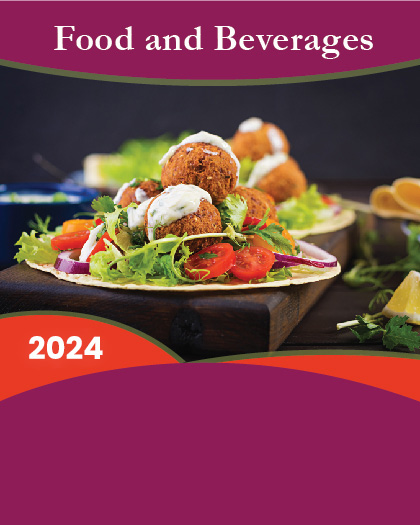1. Research Framework
1.1. Research Objective
1.2. Product Overview
1.3. Market Segmentation
2. Executive Summary
3. Middle East and Africa Tea Market Insights
3.1. Industry Value Chain Analysis
3.1.1. DROC Analysis
3.1.2. Growth Drivers
3.1.2.1. Rising Health Consciousness
3.1.2.2. Growing Disposable Income
3.1.2.3. Innovation and Product Diversification
3.1.2.4. Expanding E-commerce and Online Sales
3.1.3. Restraints
3.1.3.1. Intense Competition
3.1.3.2. Fluctuating Raw Material Prices
3.1.4. Opportunities
3.1.4.1. Increasing Tea Culture
3.1.4.2. Sustainability and Ethical Sourcing
3.1.5. Challenges
3.1.5.1. Rising Labor Costs
3.1.5.2. Consumer Preference Shifts
3.2. Technology Advancements/Recent Developments
3.3. Regulatory Framework
3.4. Porter's Five Forces Analysis
3.4.1. Bargaining Power of Suppliers
3.4.2. Bargaining Power of Buyers
3.4.3. Threat of New Entrants
3.4.4. Threat of Substitutes
3.4.5. Intensity of Rivalry
4. Middle East and Africa Tea Market: Marketing Strategies
5. Middle East and Africa Tea Market: Pricing Analysis
6. Middle East and Africa Tea Market Overview
6.1. Market Size & Forecast, 2019-2030
6.1.1. By Value (USD Million)
6.2. Market Share & Forecast
6.2.1. By Type
6.2.1.1. Green Tea
6.2.1.2. Black Tea
6.2.1.3. Oolong Tea
6.2.1.4. Fruit/Herbal Tea
6.2.1.5. Others
6.2.2. By Packaging
6.2.2.1. Plastic Containers
6.2.2.2. Loose Tea
6.2.2.3. Paperboards
6.2.2.4. Aluminum Tins
6.2.2.5. Tea Bags
6.2.3. By Application
6.2.3.1. Residential
6.2.3.2. Commercial
6.2.4. By Distribution Channel
6.2.4.1. Supermarkets/ Hypermarkets
6.2.4.2. Specialty Stores
6.2.4.3. Convenience Stores
6.2.4.4. Online Stores
6.2.4.5. Others
6.2.5. By Country
6.2.5.1. Saudi Arabia
6.2.5.2. UAE
6.2.5.3. Qatar
6.2.5.4. Kuwait
6.2.5.5. South Africa
6.2.5.6. Nigeria
6.2.5.7. Algeria
6.2.5.8. Rest of Middle East and Africa
7. Saudi Arabia Tea Market
7.1. Market Size & Forecast, 2019-2030
7.1.1. By Value (USD Million)
7.2. Market Share & Forecast
7.2.1. By Type
7.2.2. By Packaging
7.2.3. By Application
7.2.4. By Distribution Channel
8. UAE Tea Market
8.1. Market Size & Forecast, 2019-2030
8.1.1. By Value (USD Million)
8.2. Market Share & Forecast
8.2.1. By Type
8.2.2. By Packaging
8.2.3. By Application
8.2.4. By Distribution Channel
9. Qatar Tea Market
9.1. Market Size & Forecast, 2019-2030
9.1.1. By Value (USD Million)
9.2. Market Share & Forecast
9.2.1. By Type
9.2.2. By Packaging
9.2.3. By Application
9.2.4. By Distribution Channel
10. Kuwait Tea Market
10.1. Market Size & Forecast, 2019-2030
10.1.1. By Value (USD Million)
10.2. Market Share & Forecast
10.2.1. By Type
10.2.2. By Packaging
10.2.3. By Application
10.2.4. By Distribution Channel
11. South Africa Tea Market
11.1. Market Size & Forecast, 2019-2030
11.1.1. By Value (USD Million)
11.2. Market Share & Forecast
11.2.1. By Type
11.2.2. By Packaging
11.2.3. By Application
11.2.4. By Distribution Channel
12. Nigeria Tea Market
12.1. Market Size & Forecast, 2019-2030
12.1.1. By Value (USD Million)
12.2. Market Share & Forecast
12.2.1. By Type
12.2.2. By Packaging
12.2.3. By Application
12.2.4. By Distribution Channel
13. Algeria Tea Market
13.1. Market Size & Forecast, 2019-2030
13.1.1. By Value (USD Million)
13.2. Market Share & Forecast
13.2.1. By Type
13.2.2. By Packaging
13.2.3. By Application
13.2.4. By Distribution Channel
14. Rest of MEA Tea Market
14.1. Market Size & Forecast, 2019-2030
14.1.1. By Value (USD Million)
14.2. Market Share & Forecast
14.2.1. By Type
14.2.2. By Packaging
14.2.3. By Application
14.2.4. By Distribution Channel
15. Competitive Landscape
15.1. List of Key Players and Their Offerings
15.2. Middle East and Africa Tea Company Market Share Analysis, 2023
15.3. Competitive Benchmarking, By Operating Parameters
15.4. Key Strategic Developments (Mergers, Acquisitions, Partnerships)
16. Impact of Escalating Geopolitical Tensions on Middle East and Africa Tea Market
17. Company Profiles (Company Overview, Financial Matrix, Competitive Landscape, Key Personnel, Key Competitors, Contact Address, Strategic Outlook, and SWOT Analysis)
17.1. Tata
17.2. Unilever
17.3. Nestle
17.4. Barry's Tea
17.5. Apeejay Surrendra Group
17.6. Bettys & Taylors Group Ltd
17.7. McLeod Russel
17.8. ITO EN Inc
17.9. Other Prominent Players
18. Key Strategic Recommendations
19. Research Methodology
19.1. Qualitative Research
19.1.1. Primary & Secondary Research
19.2. Quantitative Research
19.3. Market Breakdown & Data Triangulation
19.3.1. Secondary Research
19.3.2. Primary Research
19.4. Breakdown of Primary Research Respondents, By Region
19.5. Assumptions & Limitations
*Financial information of non-listed companies can be provided as per availability.
**The segmentation and the companies are subject to modifications based on in-depth secondary research for the final deliverable























